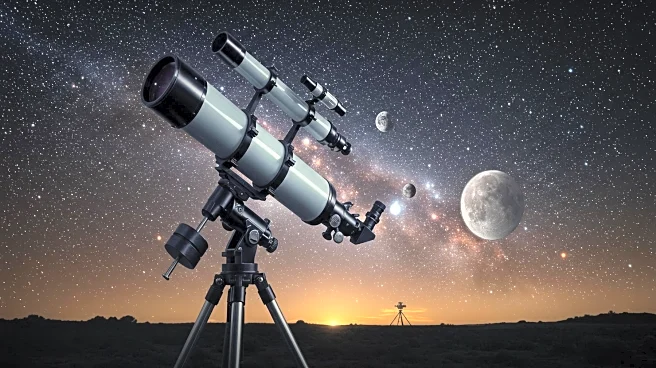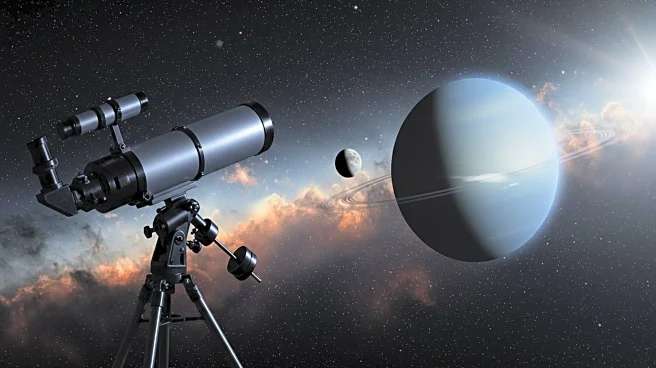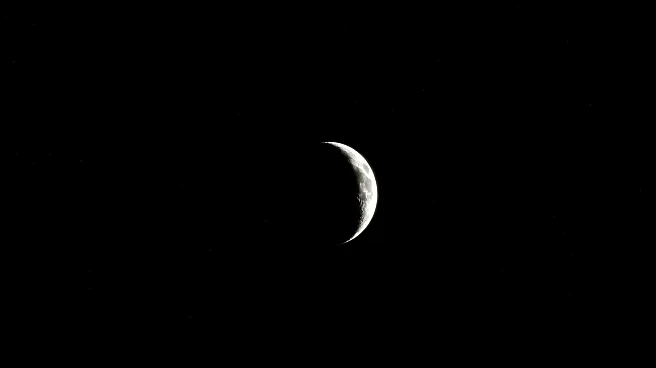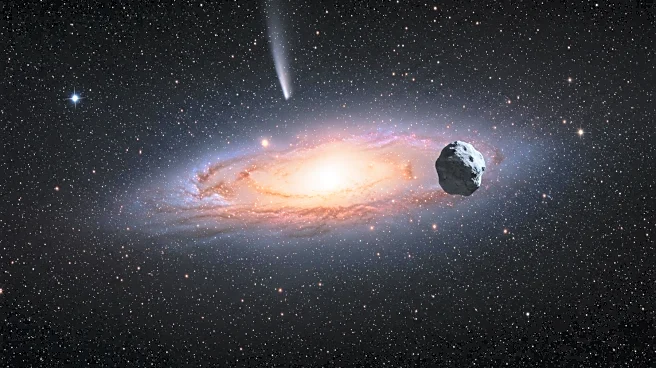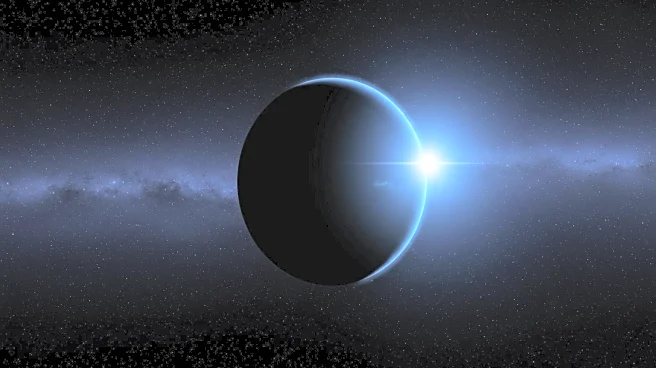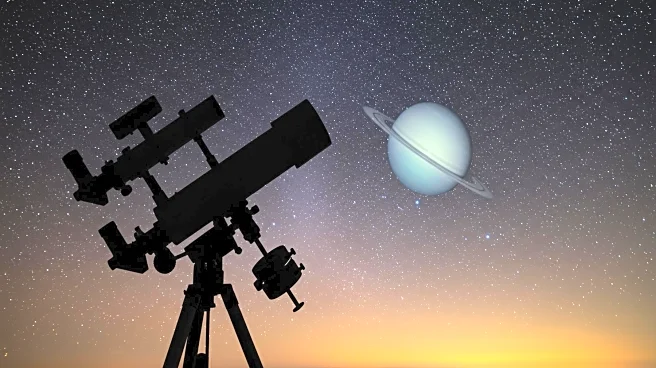Rapid Read • 8 min read
Astronomers utilizing NASA's James Webb Space Telescope have identified a new moon orbiting Uranus, designated as S/2025 U1. This moon, approximately 6 miles in diameter, was undetectable during the Voyager 2 probe's 1986 flyby and by other telescopes. The discovery was made by a team from the Southwest Research Institute in Colorado, who conducted 10 different 40-minute exposures using the telescope's Near-Infrared Camera. This finding increases the total number of known moons orbiting Uranus to 29. The moon orbits Uranus at a distance of about 35,000 miles from the planet's center, following a circular path, suggesting it formed in its current position.
AD
The discovery of S/2025 U1 highlights the advanced capabilities of the James Webb Space Telescope and underscores the complexity of Uranus's moon and ring system. Uranus has a unique collection of small inner moons, which interact with its rings, hinting at a chaotic history. This discovery suggests that there may be more undiscovered moons, adding to our understanding of the planet's formation and evolution. The findings contribute to the broader field of planetary science, offering insights into the dynamics of celestial bodies and their interactions.
The newly discovered moon will receive an official name from the International Astronomical Union in the future. The James Webb Space Telescope's capabilities will continue to be utilized to explore Uranus and other distant celestial bodies, potentially leading to further discoveries. Scientists aim to deepen their understanding of Uranus's complex system, which may reveal more about the planet's history and the formation of its moons and rings.
The discovery of S/2025 U1 not only adds to the known moons of Uranus but also challenges existing theories about the planet's ring and moon system. The intricate relationships between Uranus's moons and rings may offer new insights into the processes that govern planetary systems. This discovery could lead to a reevaluation of the boundaries between ring systems and moon systems, influencing future research and exploration missions.
AD
More Stories You Might Enjoy
